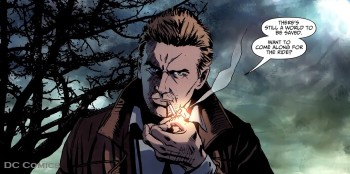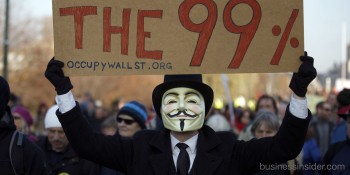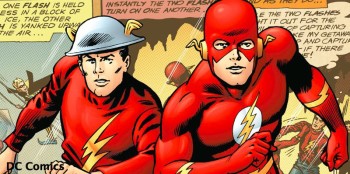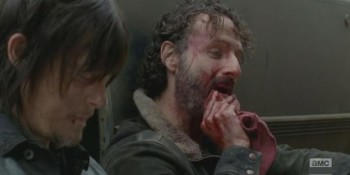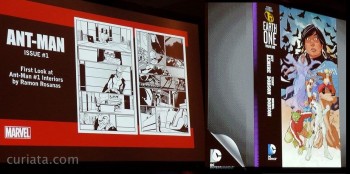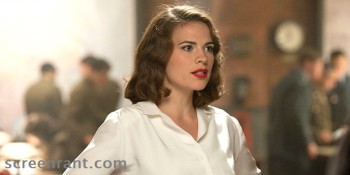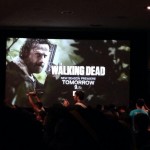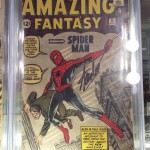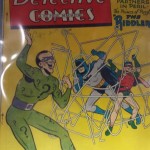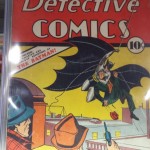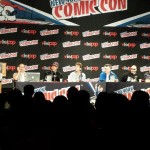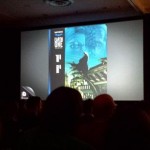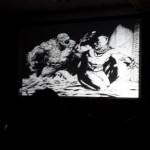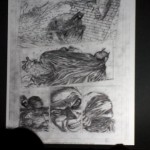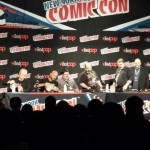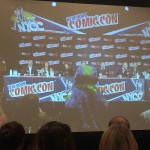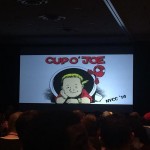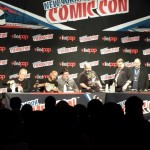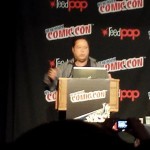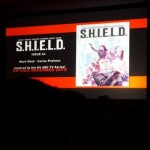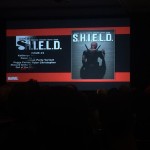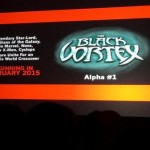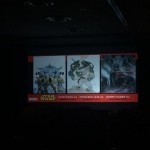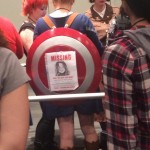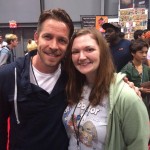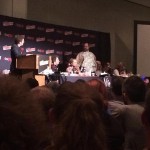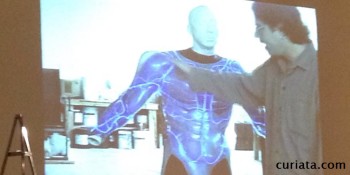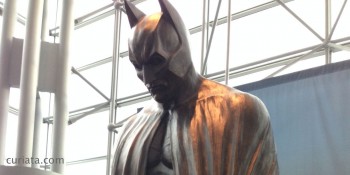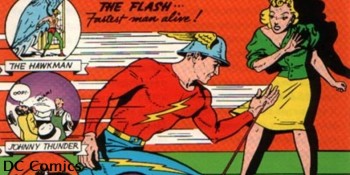I’ve been reading a lot of comics lately. When I got home from New York Comic Con, I was in the mood to do more comic reading, so I signed up for Marvel Unlimited to read through much of their back catalog. I’m in the middle of Civil War and plan to tackle the “Infinity” story lines next. My plan is to work my way through the stories Marvel is planning on adapting to film first, then go back to as many other titles as I can.
I also took advantage of a sale DC Comics was recently having on their John Constantine titles and bought several collections of the early Hellblazer comics that established the Constantine character. Prior to watching the pilot of NBC’s Constantine, my knowledge of the character was limited to his appearances in Neil Gaiman‘s Sandman comics and the movie starring Keanu Reeves, which I’m sure many true Constantine fans would rather forget.
While I had never read any of the Hellblazer comics, I’ve always been intrigued by the character — especially once I started hearing about the new series. Before the Constantine screening at NYCC, one of the emcees asked the audience what they liked about Constantine. The girl who answered the question described him as being a “selfish coward,” which intrigued me even more, as that wasn’t an image I had associated with him up to this point. Clearly, there was a lot about Constantine I did not know.
When I found out about the DC sale on the comics, I couldn’t resist buying some to get an idea of what Constantine is really like. I was also curious to see how the show would compare to the comics — though I wouldn’t be nearly as critical as any of the fans who have been reading the comics for years. I have recently finished reading the first collection of Hellblazer, which includes Hellblazer #1-9 and Swamp Thing #76-77. So, here are some thoughts on Constantine and the Hellblazer comics coming from a first-time reader.
By the time the Hellblazer comics debuted in 1988, Constantine was already an established character, having made several appearances in the Swamp Thing, beginning with Swamp Thing #37 in 1983. I know even less about Swamp Thing than I do Constantine, so the overall arc of those two issues and how they fit in with Constantine’s arc at that point was a little lost on me — I didn’t put all the pieces together until I started the second volume of Constantine comics — but I learned a lot about Constantine just within the first issues of his series.
What I learned in reading the first nine issues of Hellblazer was that the girl at NYCC was right on target with her description of Constantine. He is a selfish coward — and a few other things I won’t put into print. Yet, oddly, I can’t help but like him. He has a certain “irresistible charm,” as Constantine himself puts it.
The first few issues of Hellblazer appear to be standalone stories. It isn’t until about halfway through the collection that the reader starts to notice the pattern and the thread that ties them all together. The last few issues are one continuous story, as Constantine tries to outmaneuver forces of heaven and hell in order to maintain balance on earth.
The nature of Constantine’s character becomes fairly apparent right from the first issue, as he willingly sacrifices the life of a man who has been his friend since childhood in order to stop a demon. It’s clear Constantine feels guilt over his choice, but he doesn’t hesitate in making the difficult decision. Constantine lives in a world where he is forced to frequently make choices between what’s best for one versus what’s good for everyone. This can make him seem callous and cold, but these are decisions that must be made, and he shows he is capable of making them.
However, not all Constantine’s decisions are for the good of the many. Constantine’s cowardice is more apparent in the fifth issue, “When Johnny Comes Marching Home,” which adds a supernatural twist to post-traumatic stress. Constantine hides and watches as a man caught up in a war flashback rapes and murders his own wife. Instead of stepping in to save the woman, Constantine maintains his cover.
“No way I can go charging into their movie,” Constantine said. “It’s too bloody dangerous.”
Later, he acknowledges his own weakness, as he watches the woman’s attempt to defend herself.
“I should help her do the bastard, but I still can’t move — at least that’s what I tell myself.”
These very different aspects to his personality help to make Constantine a fascinating character. I can’t wait to learn more as I continue through the comics.
The Hellblazer comics are pretty dark — lots of demonic activity and mutilation, murder, and more. According to series star Matt Ryan at NYCC, the series has not been cleansed for television — this is the Constantine fans have been reading about. It will be interesting to see how closely the show follows the comics, and what NBC will let them get away with. I’m even more excited about the show now that I’ve been reading the comics.
Ryan as Constantine was a terrific casting choice. He seems to understand the character and really embodies Constantine’s attitude well. Even the way he walked out on stage at NYCC reminded me of Constantine. The success of the series really hinges on whether fans can accept the actor as their beloved comic book character, and I think they found the right man with Ryan.
After reading the first issues of Hellblazer, I started to pick up on the elements of the comics that are making their way into the series. I was particularly amused to discover Constantine’s response to where he came from: “The sordid passions of my parents” was taken directly from the comic — though in the comic, the line belongs to Zed, one of Constantine’s associates and an occasional lover. We caught a glimpse of Zed and one of her talents at the very end of the pilot episode, then had more of an introduction last week.
Looking closely at the artwork scattered around Zed’s room, you’ll find multiple familiar images if you’re a fan of the comics. Even I was able to recognize several, and I’m only up to Hellblazer #12. But I saw the cover of Hellblazer volume 1, as well as the grotesque form of the four British Boys the demon Nergal molded together and sent after Constantine in one of the early issues. It’s these little Easter eggs and attention to detail that make the show fun to watch.
Constantine’s history with Newcastle and young Astra was a large plot point in the first episode of the series, but I’ve only just begun to learn more about what happened in Newcastle in the second volume of the comics. It appears NBC has tamed down Astra’s story a little — they seem to have left out the abuse and her involvement in creating the original demon — though more could be revealed as the series progresses.
Another great piece of casting was Jeremy Davies as Ritchie Simpson. I loved that I immediately recognized Ritchie when I was reading the comics. I couldn’t remember his name from the series (despite having watched the pilot three times), but Davies’ look was so much like Ritchie in the comics that I had no doubt this was the right character. I read all Ritchie’s lines in the comics in Davies’ voice, and really do think he was a great choice. This week we’ll see the introduction of another character from the comics; I’m looking forward to seeing what the show does with Papa Midnite.
It’s still early to say that NBC’s Constantine won’t disappoint fans — and I’m probably biased since I watched the pilot before reading the comics — but I believe the cast and creators are at least trying to create a faithful adaptation of comics, and I’m looking forward to seeing what’s coming, both on television and in the comics.
